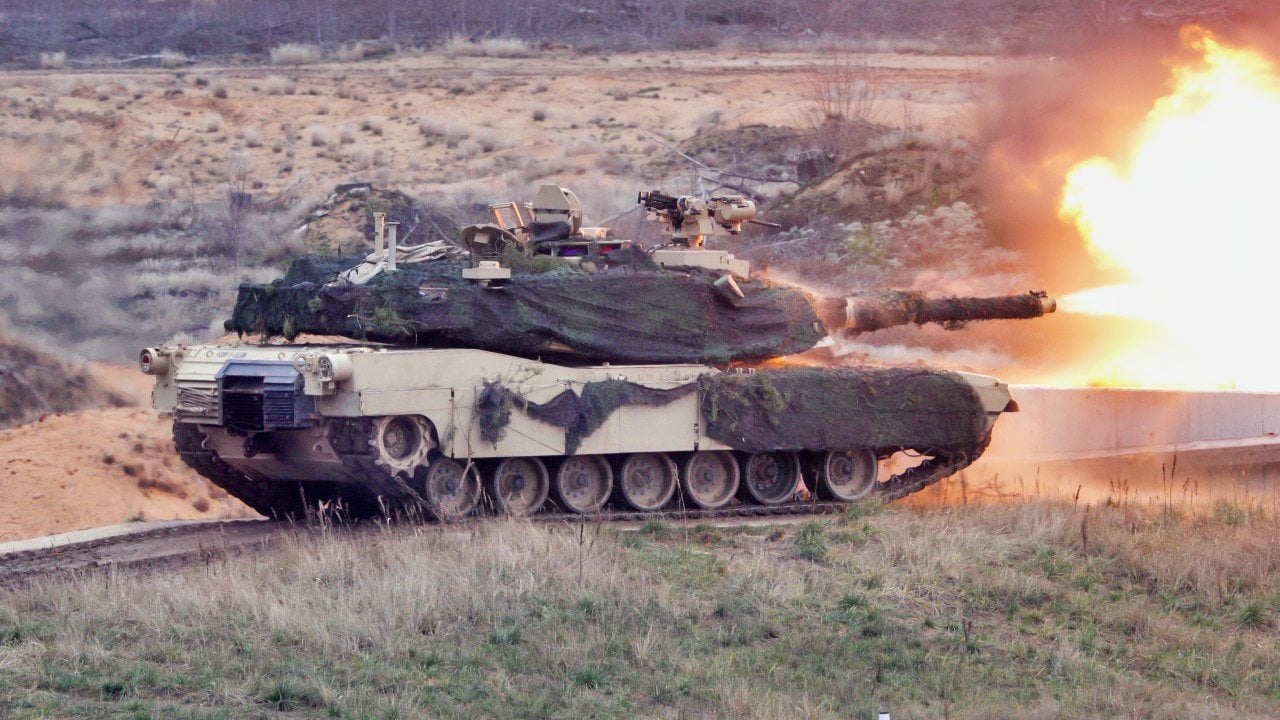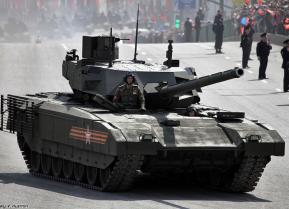MBT-70: The 'Super' Tank That Failed to Create the M1 Abrams
As tensions between the USSR and Washington heightened in the 1960s, the U.S. and West Germany collaborated to develop a joint advanced tank called the “MBT-70” project.
Summary and Key Points: In the 1960s, the United States and West Germany partnered to develop the MBT-70, an advanced main battle tank intended to replace both the American M60 Patton and the German Leopard I.

-Aimed at countering Soviet advancements during the Cold War, the project faced significant hurdles, including design disagreements, metric versus imperial measurement conflicts, and escalating costs—from an initial $80 million to over $303 million.
-The MBT-70 was ultimately canceled, but its technological innovations were not lost.
-Both nations leveraged the experience to develop their own successful tanks: the U.S. M1 Abrams and the German Leopard 2, both of which remain influential and are currently aiding Ukraine.
Why the US and West Germany's MBT-70 Tank Never Reached the Battlefield
Russia’s ongoing invasion of Ukraine has highlighted the critical role tank warfare can play in the modern era of conflict.
Since February 2022, both Kyiv and Moscow have deployed a litany of main battle tanks to the front lines to aid their respective war efforts. The use of armored vehicles in war has been practiced for many decades, and these military systems have withstood the test of time.
However, not all tanks are created equally. Since the invasion first commenced, Moscow has lost more than half of its tank fleet primarily to Ukraine’s arsenal of Western-delivered anti-tank weaponry.
Even Russia’s newest T-14 Armata MBT has not performed up to expectations in the conflict. Despite the dismal performance of Russia’s MBTs today, Soviet tanks used to be quite formidable back in the Cold War.
The Origin Story of the MBT-70 Project
As tensions between the USSR and Washington heightened in the 1960’s, the U.S. and West Germany collaborated to develop a joint advanced tank called the “MBT-70” project.

Then-U.S. Secretary of Defense Robert McNamara spearheaded this idea after serving in the U.S. Army Air Forces during the Second World War. Around this time, the North Atlantic Treaty Organization (NATO) member nations possessed few weapons that were developed jointly. In the 1950s and early 1960s, West Germany used the Leopard I while the American forces primarily deployed M60 Pattons in battle. Both countries desired a completely new tank model that could replace both the Patton and Leopard.
What problems led to the downfall of the joint project?
McNamara hoped to work with West Germany to create a solid NATO-used tank.
In the early 1960s, Germany and the U.S. signed a memorandum of understanding that outlined how the joint venture would work. A Joint Engineering Agency and a Joint Design Team, including members from both countries, were described in the MOU.
Despite the detailed MOU, the MBT-70 program never came to fruition. German and American engineers argued over the potential tank’s design. Additionally, both teams disputed whether or not to use the metric system to design the joint MBT.
In terms of the MBT-70’s arrangement, both German and American design teams elected for a rear-mounted diesel-fueled engine. However, both teams also opted for separate manufacturers. The tank was also intended to feature a steel-layered tungsten alloy armor with an interior protective shell to support the MBT’s survivability against 105m shells fired by the Soviet Union.

As explained by Defense Media Network, “Instead of having the crew stations inside the hull, as was usually the case, they were being put inside the MBT-70’s oversized turret, which would be protected against nuclear, biological and chemical (NBC) threats. This also made it easier to work out the tank’s armor layout, which they agreed should consist of two spaced layers; an outer layer made of thick, hard, cold-rolled steel and an inner layer made of “soft’ steel that would also protect against “spalling,” or interior fragmentation of the armor.”
Like today’s South Korean K2 Black Panther tank,the MBT-70 featured a hydropneumatic suspension that enabled the vehicle to kneel forward or lean backward. This capability allowed the tank’s main gun to have a higher elevation range for targets.
The main gun fitted to this joint tank was an impressive 152mm cannon, a serious improvement from the then-standard 105mm main gun.
An overview of the MBT-70’s shortcomings
The West German-American tank prototype was simply too heavy. For the Germans, this was a particularly negative characteristic since their domestic rail transportation infrastructure was not equipped to carry tanks of this size. Additionally, tanker testers intensely disliked the squat turret on the joint tank. Its position, on a rotating capsule that always faced forwards, was considered disorientating.
The rising price associated with the joint tank also caused many problems between the two design teams. Initially, the project’s engineers expected the tank would cost around $80 million. Over time, though, the price tag for fourteen pilot vehicles rose to more than $303 million. This was the last straw for the German engineers, who withdrew from the project and used some of its completed prototypes to create the Leopard 2 MBT. The U.S. also took what it could from the collaborative effort to develop the XM1, leading to the M1 Abrams main battle tank.
Introducing the Abrams and Leopard 2 MBTs
While the MBT-70 program was nixed, both the subsequent Abrams and Leopard 2 models would prove to be formidable armored vehicles. In fact, both models are being provided to Ukraine today to help the country defend against Russia’s ongoing invasion.
Both the Abrams and Leopard MBTs possess formidable capabilities today. Considering that both tanks have been combat tested, the MBT-70 program should not be deemed as a complete failure.
About the Author: Maya Carlin
Maya Carlin is an analyst with the Center for Security Policy and a former Anna Sobol Levy Fellow at IDC Herzliya in Israel. She has by-lines in many publications, including The National Interest, Jerusalem Post, and Times of Israel. You can follow her on Twitter: @MayaCarlin.
Image Credit: Creative Commons and/or Shutterstock.


